Description
0.37mm FeCrAl Round A1 Wire
The Crazy Wire Company are best known and long established as Europe’s preferred suppliers of top quality FeCrAl A1 wire. We have enormous stock levels at all times as we use this wire to weave our mesh products.
0.37mm FeCrAl alloy wire is a type of electric resistance wire that is made from an iron-chromium-aluminum alloy. This type of wire is known for its high-temperature resistance and good oxidation resistance, making it suitable for use in high-temperature heating applications.
The wire has a round cross-section with a diameter of 0.37mm, which is thicker than some other resistance wires, making it suitable for applications that require more power. It is commonly used in heating elements for household appliances, industrial furnaces, and other high-temperature applications where reliability and durability are critical.
Technical Specification:
- Diameter – 0.37mm (370 Micron – 27 AWG)
- Ohms/ft – 13.26
- C = Min – 0% Max – 0.08%
- Si = Min – 0% Max – 0.7%
- Mn = Min – 0% Max – 0.4%
- Cr = Min – 20.5% Max – 23.5%
- Al = Nominal Comp – 5.8% – Min – 0% – Max – 0%
- Fe = Balance
Available KA1 Options:
- 1.15mm (17 AWG) – 1.35 ohms/m
- 1.02mm (18 AWG) – 1.77 ohms/m
- 0.9mm (19 AWG) – 2.15 ohms/m
- 0.8mm (20 AWG) – 2.84 ohms/m
- 0.7mm (21 AWG) – 3.58 ohms/m
- 0.6mm (22 AWG) – 4.94 ohms/m
- 0.65mm (22 AWG) – 4.26 ohms/m
- 0.64mm (22 AWG)
- 0.5mm (24 AWG) – 7.11 ohms/m
- 0.55mm x 0.1mm – 26.05 ohms/m
- 0.55mm (23 AWG) – 5.96 ohms/m
- 0.4mm (26 AWG) – 11.46 ohms/m
- 0.48mm (25 AWG) – 7.79 ohms/m
- 0.45mm (25 AWG) – 8.93 ohms/m
- 0.42mm (26 AWG) – 10.6 ohms/m
- 0.3mm (29 AWG) -19.89 ohms/m
- 0.38mm (27 AWG) – 12.79 ohms/m
- 0.37mm (27 AWG) – 13.26 ohms/m
- 0.35mm (27 AWG) – 14.69 ohms/m
- 0.34mm (28 AWG) -15.15 ohms/m
- 0.32mm (28 AWG) -17.46 ohms/m
- 0.2mm (32 AWG) – 46.11 ohms/m
- 0.28mm (30 AWG) – 22.75 ohms/m
- 0.27mm (30 AWG) – 24.86 ohms/m
- 0.25mm (30 AWG) – 29.29 ohms/m
- 0.23mm (31 AWG) – 34.36 ohms/m
- 0.21mm (32 AWG) – 40.44 ohms/m
- 0.1mm x 0.2mm – 71.83 ohms/m
- 0.1mm (38 AWG)
- 0.18mm (33 AWG) – 56.98 ohms/m
- 0.17mm (34 AWG) – 62.57 ohms/m
- 0.15mm (34 AWG) – 82.52 ohms/m
- 0.13mm (36 AWG) – 107.87 Ohms/m
- 0.12mm (36 AWG)
- 0.09mm (39 AWG) – 228.40 ohms/m
- 0.08mm (40 AWG)
- 0.07mm (41 AWG)
- 0.06mm (42 AWG) – 496 ohms/m
- 0.05mm (44 AWG) – 577 ohms/m
Why Use The Crazy Wire Company
- Quality of products: The Crazy Wire Company always offer high-quality products that meet industry standards and customer expectations.
- Selection: We offer a wide variety of wire products and sizes to meet the diverse needs of our customers. We have more than 600 products available through our site and counting.
- Price: We always offer the best value possible. Our wires are available as part of our major weaving processes, so it is bought at the best possible rate.
- Availability: Our products are kept in house and are ready to ship immediately.
- Customer service: Our experienced staff help our customers feel confident in their purchases and provide assistance when required.
What Else Is Available?
We do not only offer KA1 round wire. We also have a huge range of stainless steel wire and Ni80 round wire in immediate stock too.
Ribbon wire and flat wire are stocked for immediate dispatch too.
FAQs About This Wire
What Are The Applications Of Resistance Heating?
Resistance heating has a wide range of applications in various industries and settings. Here are some common applications of resistance heating:
1. Heating elements: Resistance heating is commonly used in the construction of heating elements for various heating applications, including electric heaters, furnaces, ovens, and industrial heating systems.
2. Metal processing: Resistance heating is used in the processing of metals, such as in the forging, welding, and annealing of metals.
3. Plastics processing: Resistance heating is used in the processing of plastics, such as in the extrusion, injection moulding, and blow moulding of plastics.
4. Glass manufacturing: Resistance heating is used in the manufacturing of glass products, such as in the production of glass bottles, windows, and mirrors.
5. Semiconductor processing: Resistance heating is used in the manufacturing of semiconductor devices, such as in the annealing of silicon wafers.
6. Medical applications: Resistance heating is used in various medical applications, such as in the heating of medical fluids and in the treatment of certain medical conditions.
Why Does Heat Affect The Resistance Of A Wire?
Heat affects the resistance of a wire because it changes the behaviour of the electrons that carry the electrical current through the wire. As the temperature of a wire increases, the movement of the electrons within the wire also increases, which can cause collisions with the atoms in the wire. These collisions can cause the atoms to vibrate more, which increases the resistance of the wire.
The resistance of a wire is directly proportional to its temperature, according to the temperature coefficient of resistance (TCR) of the material that the wire is made of. The TCR is a measure of how much the resistance of a material changes per degree of temperature change. For most metals, the TCR is positive, which means that the resistance of the wire increases as its temperature increases.
The effect of temperature on the resistance of a wire is an important consideration in many electrical applications, particularly those involving heating elements. The increase in resistance due to heating can cause the wire to generate more heat, which can lead to a self-limiting effect known as thermal runaway. This can cause the wire to overheat and potentially melt or cause a fire, so it is important to carefully select the appropriate wire gauge, material, and heating parameters for the specific application in order to ensure safe and reliable operation.
Can We Put A Higher Wattage Element In An Oven?
It is generally not recommended to put a higher wattage heating element in an oven unless the oven is designed and rated to handle the increased power. The heating element in an oven is typically selected to match the power requirements of the oven, and changing the element to a higher wattage may cause the oven to overheat or become damaged.
A higher wattage heating element will generate more heat and require more electrical power to operate. If the oven is not designed to handle the increased power, it may overheat and damage the oven, or cause a fire. In addition, using a higher wattage heating element can void the manufacturer’s warranty and may be a safety hazard.
What Is The Heating Element Used In Electric Geyser?
The heating element used in an electric geyser is typically made of a metal alloy that has a high resistance to electricity and is able to generate heat when an electrical current is passed through it. The most commonly used alloys for electric geyser heating elements are nickel-chromium (NiCr) or KA1, which have a high melting point and excellent resistance to corrosion.
The heating element in an electric geyser is usually made up of a coiled wire that is surrounded by insulation to prevent electrical contact with the water. The coiled wire is typically encased in a metal sheath or tube that is immersed in the water. When the geyser is turned on, an electrical current is passed through the heating element, which generates heat and warms up the water.
Electric geyser heating elements are typically designed to operate at a specific voltage and wattage, and selecting the correct element for a given geyser is important to ensure safe and efficient operation. In addition, regular maintenance and cleaning of the heating element is important to prevent build-up of mineral deposits that can reduce the efficiency of the element and shorten its lifespan.
The Crazy Wire Company is a leading UK based supplier of nichrome, FeCrAl, and stainless steel wires. We specialise in rapid delivery to any location around the country. Our factory is located in Warrington, which is the historic home of the UK’s wire industry.
Check out our blog ‘everything that you need to know about wires’ for more information on resistance wire in general. Our goal for our blogs and help guides is to answer as many questions as possible to help to explain the possibilities of mesh to our customers.
We also offer similar products through our highly popular eBay store, check us out there too.
Contact our team today if you have any questions at all. We are always really keen to help in any way that we can.

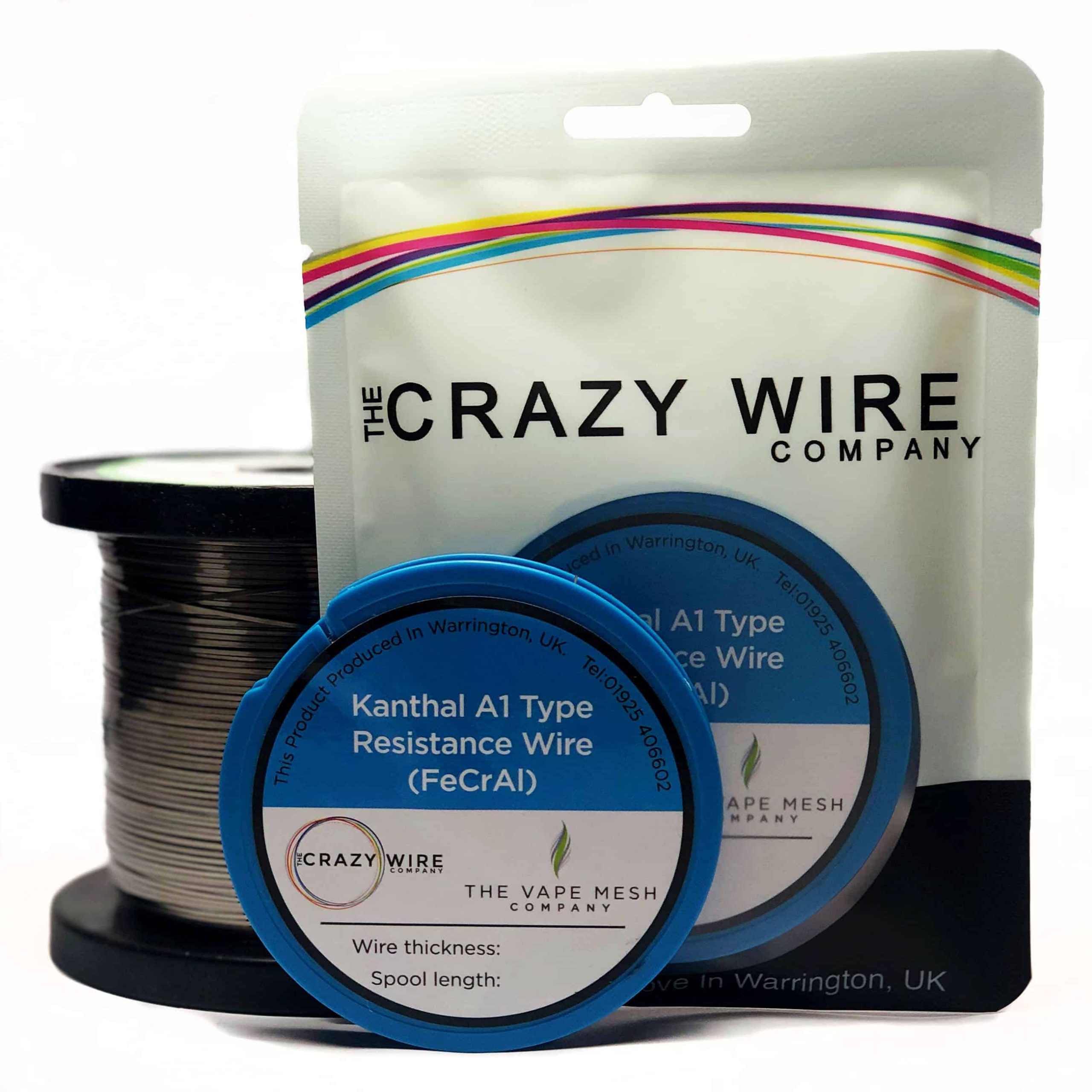


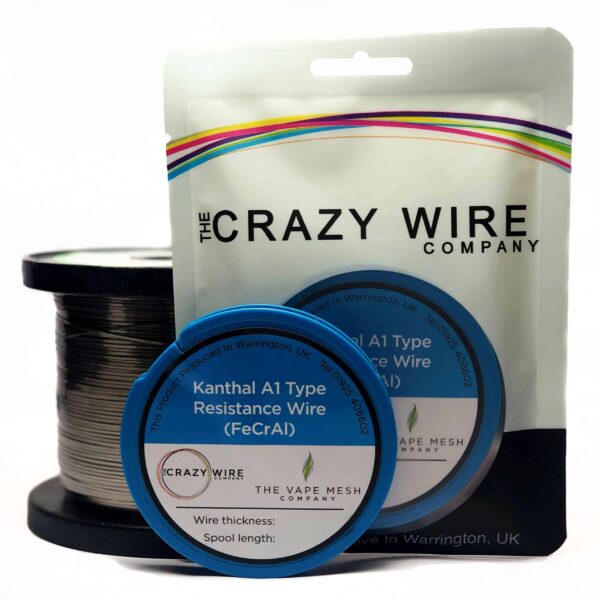
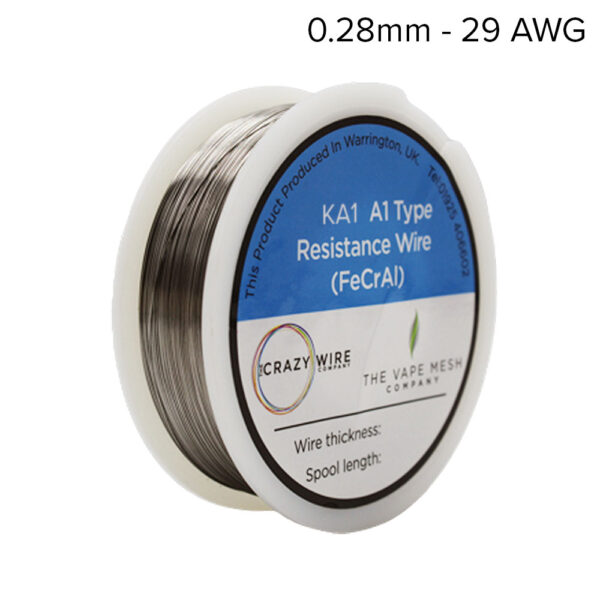
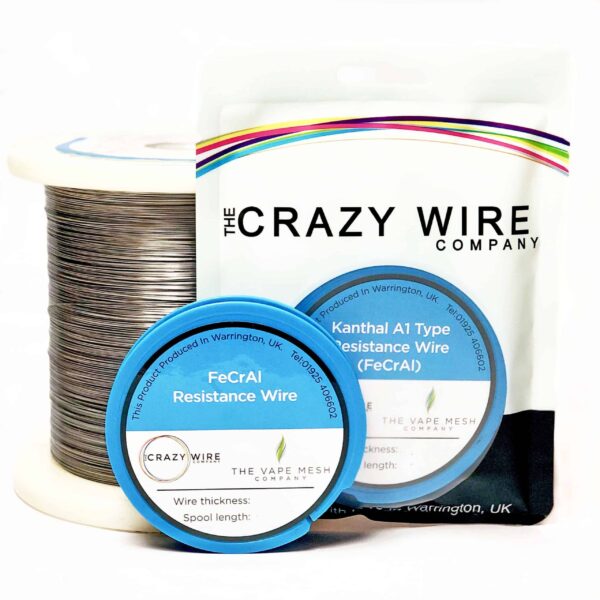
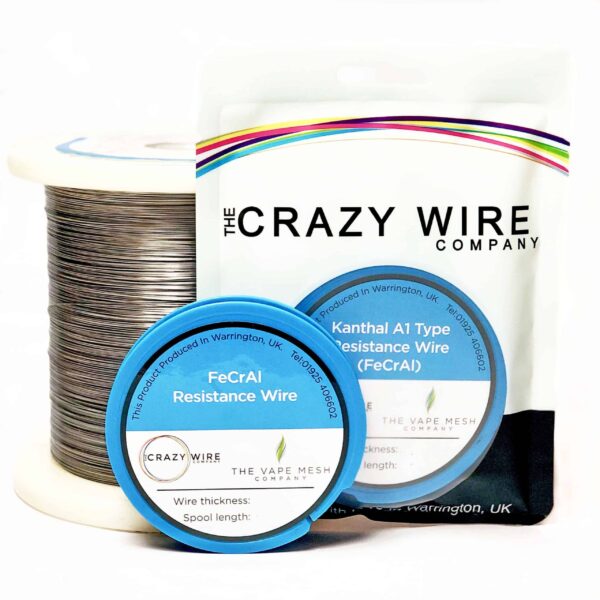

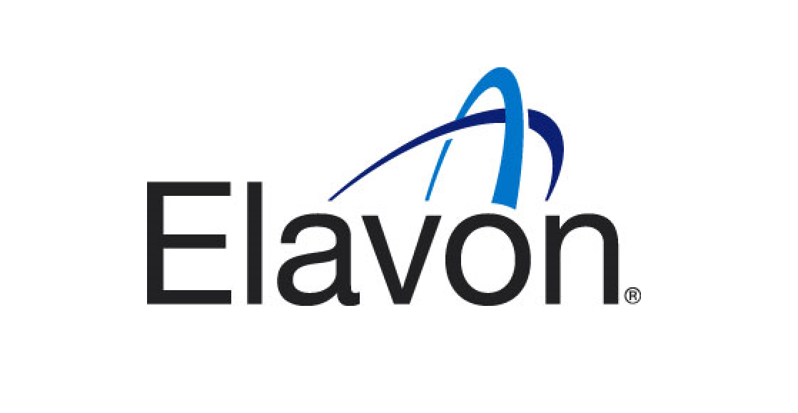



Reviews
There are no reviews yet.